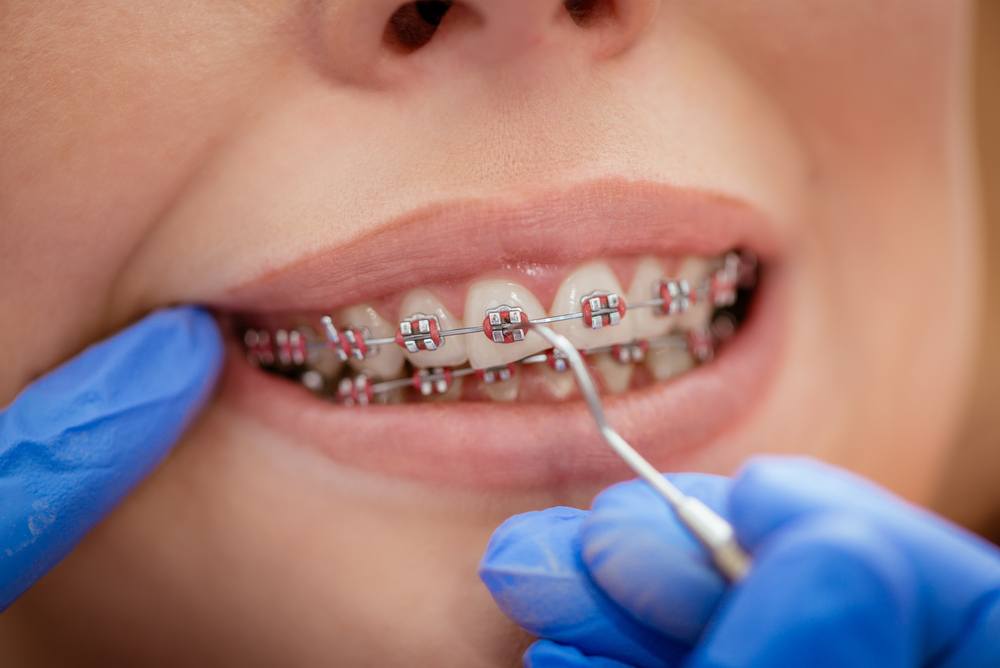Why Cumming Invisalign is the Perfect Option for a Discreet Orthodontic Solution
Why Cumming Invisalign is the Perfect Option for a Discreet Orthodontic Solution
Blog Article
Comprehensive Guide to Orthodontics Treatments for Fixing Oral Misalignments
In the realm of orthodontics, the journey to achieving a completely aligned smile entails a myriad of treatments tailored to fix oral imbalances. From standard dental braces to invisible aligners and also medical alternatives, the area of orthodontics offers a range of options to attend to differing levels of dental abnormalities. Understanding the ins and outs of each procedure, including their devices, benefits, and possible disadvantages, is crucial in making notified decisions regarding one's orthodontic therapy. As we navigate through the thorough guide to orthodontic procedures for fixing oral imbalances, the intricate information of each method will certainly unravel, clarifying the course toward a practical and harmonious dental alignment.
Orthodontic Procedures Introduction

In enhancement to standard braces and clear aligners, orthodontists might also advise other treatments like headwear, palatal expanders, or retainers to resolve particular positioning concerns (braces). These procedures are customized to each client's distinct needs and may include a mix of therapies to accomplish the wanted results. Normal changes and surveillance are vital parts of orthodontic treatment to make sure development gets on track and to make any kind of necessary modifications in the process. By going through orthodontic procedures, people can not just attain a straighter smile however also enhance their general dental health and function.
Standard Braces: Exactly How They Function
When thinking about orthodontic treatments for oral imbalances, traditional braces stand apart as a tried and true technique for correcting teeth positioning. Standard braces are composed of brackets, cables, and bands that work with each other to use continuous pressure on the teeth, progressively moving them right into the preferred placement. The brackets are attached to the teeth using a special adhesive, and the cables are threaded through the braces. By changing the stress of the wires, orthodontists can manage the direction and pressure related to each tooth, guiding them right into proper alignment over time.
As pressure is used to the teeth through the dental braces, the bone surrounding the teeth is reshaped to support the new tooth positions. Clients will need normal modifications at the orthodontist's office to ensure the braces continue to apply the correct stress for reliable teeth movement.
Unnoticeable Aligners: Disadvantages and pros
These clear, personalized trays are essentially unnoticeable when used, making them an attractive choice for individuals seeking a more cosmetically pleasing orthodontic therapy. People can eliminate the aligners prior to eating or cleaning their teeth, lowering the risk of food obtaining stuck in the home appliance and simplifying the cleaning process.

Surgical Orthodontic Options
Surgical interventions in orthodontics present feasible choices for addressing complex dental misalignments that may not be properly fixed with traditional orthodontic treatments. While typical dental braces and unseen aligners can remedy several orthodontic issues, certain instances require surgical intervention to attain ideal outcomes. Surgical orthodontic alternatives are typically recommended for serious malocclusions, significant jaw disparities, and cases where the underlying bone framework requires adjustment to attain proper positioning.
One usual medical orthodontic treatment is orthognathic surgical procedure, which entails rearranging the jaws to deal with functional issues such as difficulty speaking or chewing. This surgery is usually executed in cooperation with an orthodontist that assists line up the teeth prior to and after the procedure. Surgical orthodontics may additionally include procedures to expose influenced teeth, eliminate excess periodontal tissue, or improve the jawbone to produce an extra harmonious face profile.
Prior to thinking about surgical orthodontic alternatives, find a dentist office patients go through an extensive evaluation to figure out the requirement and prospective advantages of such treatments. cumming invisalign. While surgical treatment may seem complicated, it can substantially enhance both the function and appearances of the smile in cases where standard orthodontic therapies fall short
Retainers and Post-Treatment Treatment

Post-treatment care includes complying with the orthodontist's directions carefully. This might consist of correct oral hygiene techniques, attending follow-up appointments, and wearing the retainers as suggested. Failure to abide by post-treatment care instructions can lead to regression, where the teeth gradually see here now return towards their original settings. Constant retainer wear, great oral hygiene, and regular oral check-ups are crucial for maintaining the results achieved with orthodontic surgical treatment and making certain the long-term security of the remedied dental alignment.
Verdict
In verdict, orthodontic treatments offer numerous options for correcting dental imbalances. Surgical orthodontic alternatives are readily available for a lot more serious imbalances. In general, orthodontic treatments can efficiently boost oral health and wellness and visual look.
As we navigate via the extensive overview to orthodontic procedures for correcting dental imbalances, the intricate details of each method will unravel, shedding light on the path towards a useful and harmonious oral alignment. - orthodontist
One of the most usual orthodontic therapies is the use of dental braces, which are look at more info composed of steel braces and cords that use mild stress to progressively shift teeth into the desired setting.When thinking about orthodontic treatments for dental imbalances, conventional braces stand out as a tried and true method for remedying teeth positioning. In addition, unnoticeable aligners may not be ideal for complex orthodontic concerns that require more substantial teeth movement, as they are commonly advised for moderate to moderate situations. Retainers are personalized orthodontic devices developed to hold teeth in their corrected positions after the completion of orthodontic treatment.
Report this page